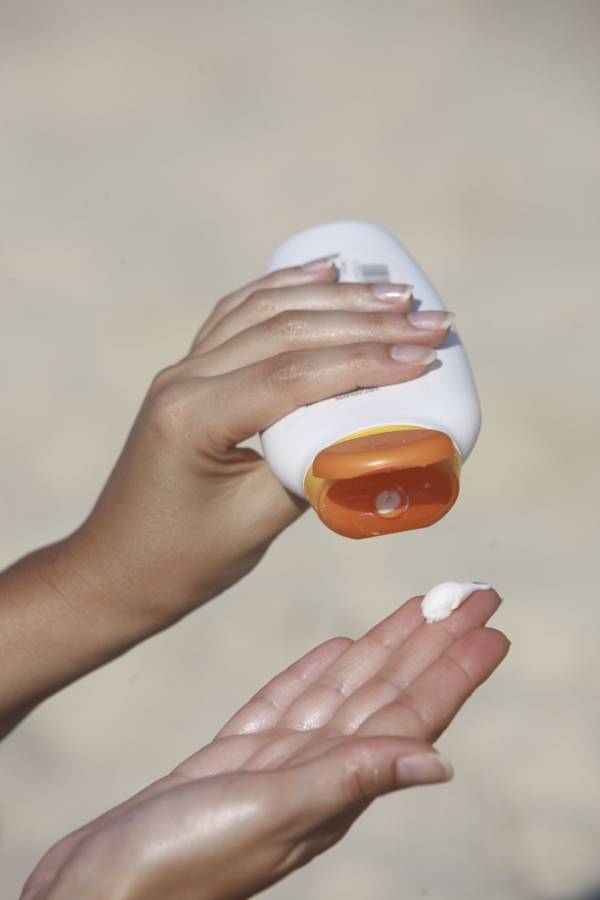It’s spring and I am sure most of you are itching to get outside and enjoy some sunshine. Before you take you head to beach we need to talk about a few things – like sunscreen. “But wait! You told me I need some sun to make vitamin D,” you say. Yes, yes, I did.
Our bodies function best when we have enough natural sunlight to make vitamin D. Adequate vitamin D levels help our immune function, bone density, and complete overall health. But we also need to ensure we don’t burn. The recommended daily exposure is just enough to turn lightly pink, which amounts to about fifteen minutes per day for most people.
Burns aren’t good for much of anything. Burning increases your risk for skin cancer, it hurts, it causes premature aging of the skin, and who wants to look like a peeling lobster? Plus, our faces are extra sensitive and we should all be taking some daily precautions to avoid damage to the skin. The best option is to wear hats and clothing that covers your skin and avoid putting on sunscreen altogether. But that’s not really realistic. I like going to the beach just as much as anyone else and I’m not going to sit on the sand in a long-sleeve shirt and hat all day. Plus, why would we work so hard to be fit if we can’t show it off sometimes?
So, we need sunscreen, right? Yes! But, there are definitely some drawbacks to some of the traditional, chemical-packed stuff. The Environmental Working Group (EWG) has pointed out several problems with traditional sunscreens that I bet most of us have never heard.

Sunscreens Increase Cancer Risk
First, sunscreen has never truly been shown to reduce the risk of skin cancer. Crazy right? The FDA recommends physical barriers over sunscreen for this reason. Also, traditional sunscreens contain things like oxybenzone, a synthetic estrogen that disrupt your normal hormone production and may be an allergen for some.
Chemically-laden sunscreen use may even increase the risk of melanoma, the deadliest form of skin cancer. Yes, you read that right. No one really knows why but scientists believe it may be because sunscreen users stay out in the sun longer or that the breakdown of the chemicals in sunscreen may increase the formation of free radicals, thus increasing the risk of skin cancer development.
Also, a form of vitamin A, retinyl palmitate or retinol, has been shown to increase the risk of cancerous growths. Vitamin A is normally added to sunscreens because it is an antioxidant that slows aging of the skin, but when it is exposed to sunlight it increases tumor growth. Over 25% of the sunscreens on the market contain vitamin A. Yikes! There are several other ingredients in sunscreens that also increase the generation of free radicals, which damage DNA. So, basically, your sunscreen might help prevent burning but it’s increasing your exposure to damaging free radicals, upping your risk of skin cancer and aging of the skin.
SPFs are Overrated
I know you’ve probably seen those sunscreens that boast 100+ SPF. Most people think they can slather this stuff on and stay out all day and be protected. Don’t buy into the hype. In fact, the FDA is considering banning anything with an SPF over fifty because there is no evidence it provides better protection. Instead it may be encouraging people to stay out longer than they really should and increasing their risk of skin cancer and damage to the skin.
What to Buy
So, now that we’ve established that most sunscreens really aren’t doing much to actually protect us and may even be upping our chances of cancer and skin aging, we should talk about what to look for in a sunscreen:
Mineral Sunscreens
Mineral sunscreens are the best. Titanium dioxide and zinc oxide are mineral sunscreens that are stable in the sun (i.e. they do not cause an increase in free radical generation) and protect you from both UVA and UVB rays. Many traditional sunscreens lack UVA protection.
However, you must be selective when choosing mineral sunscreens as well. Some companies have developed nano- or micro-versions of these minerals to offset the white cast they can give to the skin. Sounds like a great thing, but this may allow the minerals to penetrate into the dermis leading to toxicity. This hasn’t been proven in humans, but studies have shown toxicity in fish and aquatic life, so why take the chance? Also, there are many powder and spray versions of these mineral sunscreens but these should be avoided as well, as these minerals could be inhaled and again cause problems.
Non-Mineral Sunscreens
Also look for sunscreens that contain avobenzone and Mexoryl SX. These are two non-mineral sunscreens that block UVA rays without penetrating the skin and without increasing free radical generation. The best protection seems to come from a combination of minerals and either avobenzone or Mexoryl SX.
There are a lot of great sunscreens out there, but you may have to search beyond your local drugstore to find one that makes use of the safe ingredients mentioned above. A great place to look for safe options is the EWG website. They provide a searchable guide that includes categories like sport and beach, lip balm, and makeup.
Be patient and when possible try out products before you purchase, as everyone’s skin is a little different. Some sunscreens are going to be a little too greasy, a little too drying, a little too sticky, and so on. When you find a great one, stick with it and let us know what you like. Here’s to getting some safe, healthy doses of vitamin D the way nature intended this summer!
References:
1. Environmental Working Group, “8 Little-Known Facts About Sunscreens.” Last modified 2012. Accessed April 18, 2013.
Photos courtesy of Shutterstock.






